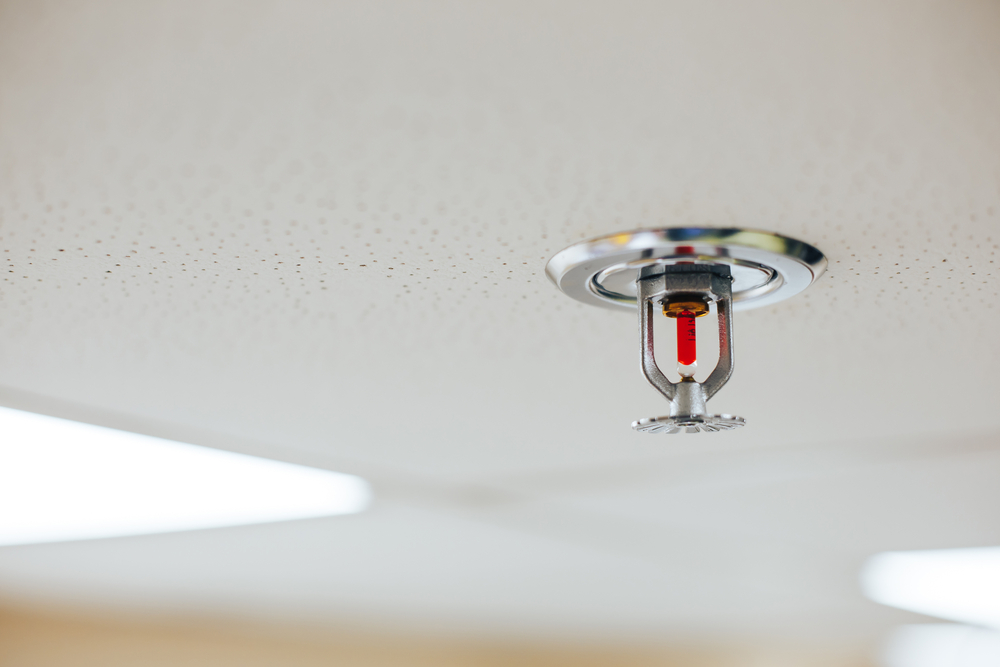Sprinkler Trade-Offs: Why You Shouldn’t Rely on a Single System for Fire Protection

Sprinklers are, indeed, an effective system for fire safety and protection, especially for controlling fires in their early stages. They also help in reducing damage and loss due to fire.
A report shows that fire spread was contained in the room where it started in 95% of properties where a sprinkler system was installed compared to 71% of structures without automatic extinguishing systems (AES).
Fire sprinklers should be installed to follow fire protection regulation standards. They have their role in fire protection, but they’re not enough to fight fire accidents on their own.
Case in point: sprinklers versus fire-resistive glazing solutions.
The Role of Sprinklers in Fire Protection
Untamed fires will travel through spaces uncontrollably. This is where sprinklers come in to immediately manage fire at the point of origin. Sprinklers are active fire protection systems, helping to slow down or extinguish flames from consuming a property. They also give people ample time to evacuate to safety.
Here are some eye-opening stats and facts about fire sprinklers:
- From 2010 to 2014, properties without sprinklers that had experienced fire accidents lost roughly 2,660 people on average per year. This is 60 times more than the number of people who perished in establishments with sprinklers installed.
- If there’s a reported fire in a home, the risk of dying is reduced by 85% if there are sprinklers.
- Fire sprinklers respond to a fire while it’s still small, allowing fire control before it spreads out and causes toxic smoke and radiant heat.
- Sprinklers have been effective in controlling fire in about 96% of the cases where they operated.
These numbers prove that using fire sprinklers is highly effective in restraining fire, reducing property damage, and saving lives. However, they should not work alone. Passive fire protection systems (i.e., fire-resistive glazing systems) are crucial to supporting inadequate active systems.
Below are some sprinkler trade-offs you should know.
The Downsides of Sprinkler Trade Offs
1. Sprinkler systems can fail
Sprinklers work and are effective in preventing fires, but they’re not always reliable. Fire sprinklers may fail to work as they should 7% of the time, with human error as the biggest reason.
Human error can mean many things, from getting sprinkler systems turned off to lack of maintenance. Moreover, sprinklers that are not properly designed for the building can fail due to obstruction in the sprinkler heads or when one component is defective or damaged.
2. They can be shut off
The most common reason fire sprinklers failed to work was that the system was switched off before the incident. No one can predict when a fire accident might happen. Shutting off the system at some point—intentionally or accidentally—can be a costly mishap when the unthinkable happens.
Human error due to manual intervention can lead to sprinkler systems being turned off at the moment they are most needed. Compare this to fire-rated glass doors or windows, which can do their job of preventing fire spread when needed without the need to flip a switch.
3. Architects assume all responsibilities and costs of applying for AHJ approval
The authority having jurisdiction (AHJ) is the entity responsible for enforcing the codes or standards for public safety, including fire safety in buildings.
Sprinklers like deluge sprinkler systems require AHJ approval to ensure the design and installation conditions are met. Architects cover the costs for getting this approval.
Meanwhile, other protective measures like a 1-hour fire-resistive wall assembly do not require architects to acquire AHJ approval since they’re already approved for ASTM E-119/UL 263. They also don’t require maintenance costs.
4. Sprinkler systems require regular maintenance
Fire sprinkler systems require regular maintenance to ensure all of their components are working and functioning properly. The Fire Code necessitates checking the water flow and alarm systems to make sure the sprinklers will work as intended and are monitored accordingly.
It’s difficult to detect when sprinkler systems get out of service due to damage if you don’t run regular maintenance checks.
Fight Fire with Everything You Have
Fire sprinklers can save lives, but you still need other systems to save more and prevent further damage. Supporting them with other fire control and prevention systems can elevate a structure’s fire response methods. That is why balancing active and passive fire protection systems is crucial when planning a building.
The best way to stop fire spread is by tackling it where it initially started. But for further management and prevention, it’s better to have more standards and systems in place.
SAFTI FIRST manufactures USA-made fire-rated glazing solutions that work alongside sprinkler systems to enhance your property’s fire safety measures while maintaining aesthetics and sustainability.
To learn more and find the right fire-resistive glazing products for your needs, get in touch with the experts at SAFTI FIRST today.